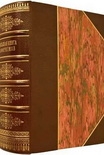Mr. Monk Goes to Germany, Lee Goldberg [i have read the book TXT] 📗

- Author: Lee Goldberg
Book online «Mr. Monk Goes to Germany, Lee Goldberg [i have read the book TXT] 📗». Author Lee Goldberg
“Sounds good to me,” Monk said.
We made a few turns and found ourselves on Friedrichstrasse, the center of what was now a high-end shopping district. It had once been the administrative center of Hitler’s government and, later, of the GDR. But no amount of neon, glass, and travertine could soften the intimidating institutional coldness of the buildings or the rigid order they were designed to convey.
And that was intentional.
The city planners were strictly enforcing the architectural principle of “critical reconstruction,” which mandated that buildings had to maintain the same historical shapes, style, and alignment of the past.
The result was that the monumental style of National Socialist architecture, which Hitler referred to as “Words of Stone,” and the cold, intimidating power of the GDR had survived, buffed up with shopping mall gloss and the sterilized Disney gleam.
All the buildings were exactly the same height and blockish shape, with smooth, unadorned, symmetrical facades of polished stone and glass that were practically flush with one another.
Each building had a two-story ground floor for restaurants or businesses, followed by four uniform stories of office space or apartments, topped by three terraced stories, creating an unbroken roofline down the entire street.
The flat conformity of the building facades was rarely broken by bay windows or other architectural features. The only things that set the buildings apart from each other were their stone cladding and the shape of their windows, which were evenly aligned in long, symmetrical rows.
Because there were no gaps between the buildings, except where the blocks were broken by other streets, the effect was like driving between two immense walls of stone and glass.
Monk gaped in amazement and pleasure at the buildings as we passed them.
“We have found paradise,” he said.
“There’s no charm or character to these buildings,” I said. “They are so functional.”
“You say that like those are bad things,” Monk said. “All the buildings fit together perfectly.”
“That’s the problem,” I said. “You can hardly tell one apart from the other.”
“All cities should look like this,” Monk said.
“What about individuality?”
“I’m all for individuality, as long as it doesn’t stand out,” he said.
“You like conformity.”
“There are valid artistic and practical reasons for maintaining a uniform height for buildings.”
“What’s artistic about sameness?”
“It assures that the domes and spires of churches, as well as the towers of official government buildings, stand out over everything else. It draws attention to them, underscoring their beauty, their omnipresence, and the religious or state power that they represent. That’s the cunning reason why Friedrich the Great created the eaves-height law in the eighteenth century. It’s one of the things that made him great.”
I regarded Monk in a new light. “You’ve done some reading.”
“I’m not illiterate,” Monk said.
“I meant that you’ve been reading about Germany.”
“I’ve had trouble sleeping,” Monk said, “so I read some of the guidebooks the Schmidts have downstairs.”
While he was talking, I’d realized something else. I hadn’t seen a single tree or even a leaf since my passing glance at Unter den Linden.
“There aren’t any plants on these streets,” I said. “Not even so much as a bush or a flower.”
“Wonderful, isn’t it?” Monk said.
“I think it’s weird,” I said.
“Nature belongs in the woods, not in the city.”
“Nature is a part of life,” I said. “It would be nice to see some here.”
“Nature muddies things up,” Monk said, “and attracts wild animals.”
“Is that another example of the thinking that made Friedrich great? Did he outlaw trees, too?”
Two blocks ahead, in the middle of the street, I could see a simple white guard shack with sandbags in front of it, marking the spot where Checkpoint Charlie, the border crossing between East and West, once stood. The shack was a replica and looked like it was more of a photo op for tourists than a meaningful historical marker or a memorial to those who’d died trying to escape to the West.
The taxi driver turned onto a side street and parked in front of a blockish building with a facade of mottled green granite. I paid him and asked for a receipt. I intended to get reimbursed by Monk for every euro I was spending. I should have insisted on a per diem, too.
We got out and I immediately noticed a single narrow strip of red cobblestones running through the asphalt and around the next corner. I took a few steps and saw a plaque embedded in the stone. I felt a shiver when I read it.
“Mr. Monk, do you know where I am standing?”
“In the middle of the street,” he said. “If you don’t move, you’re going to get hit by a bus.”
“This was where the Berlin Wall once stood,” I said. “I’m standing on history.”
“Be sure to wipe your feet,” he said. “I’m sure they won’t appreciate it if you track history into the lobby.”
And with that comment Monk went inside the building.
The logo of Im Fadenkreuz was the crosshairs of a sniper’s rifle scope. “Crosshairs,” I learned from Ernestine Kahn, the managing editor, was the English translation of the name of the magazine.
“What we like to put in our crosshairs is corruption,” she said. “We reveal the bribery, the dishonesty, and the greed of public officials and business leaders.”
“You’ll never run out of stories to tell,” I said.
“Not in Germany,” she said. “It’s the sad truth, but it’s great for our magazine and our circulation. People love it when we bring down the rich, the mighty, and the sanctimonious.”
It wasn’t hard for us to get an audience with





Comments (0)